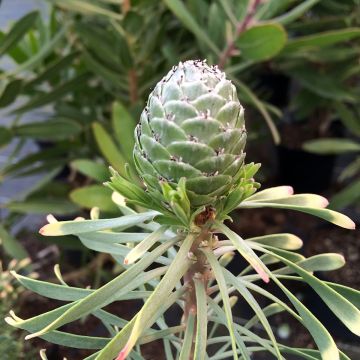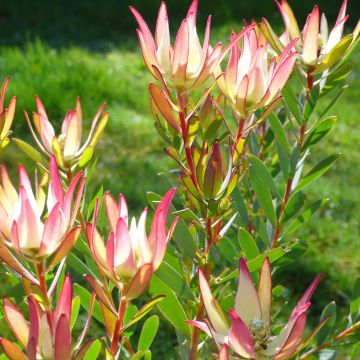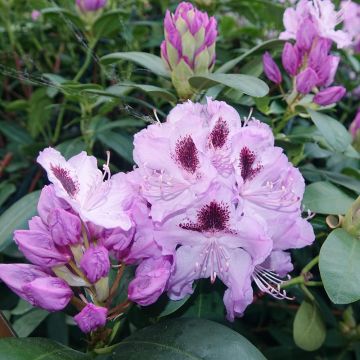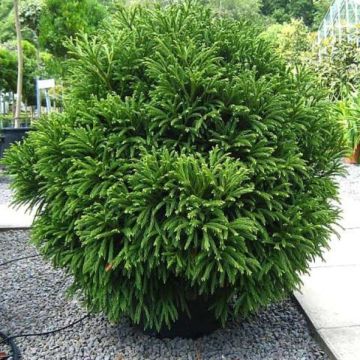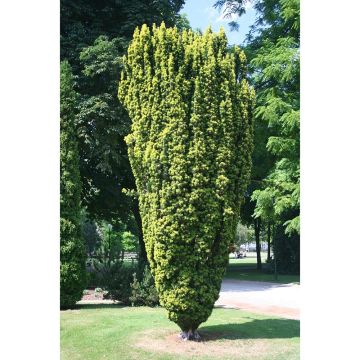

Leucadendron Safari Sunset - Conebush


Leucadendron Safari Sunset - Conebush


Leucadendron Safari Sunset - Conebush


Leucadendron Safari Sunset - Conebush


Leucadendron Safari Sunset - Conebush
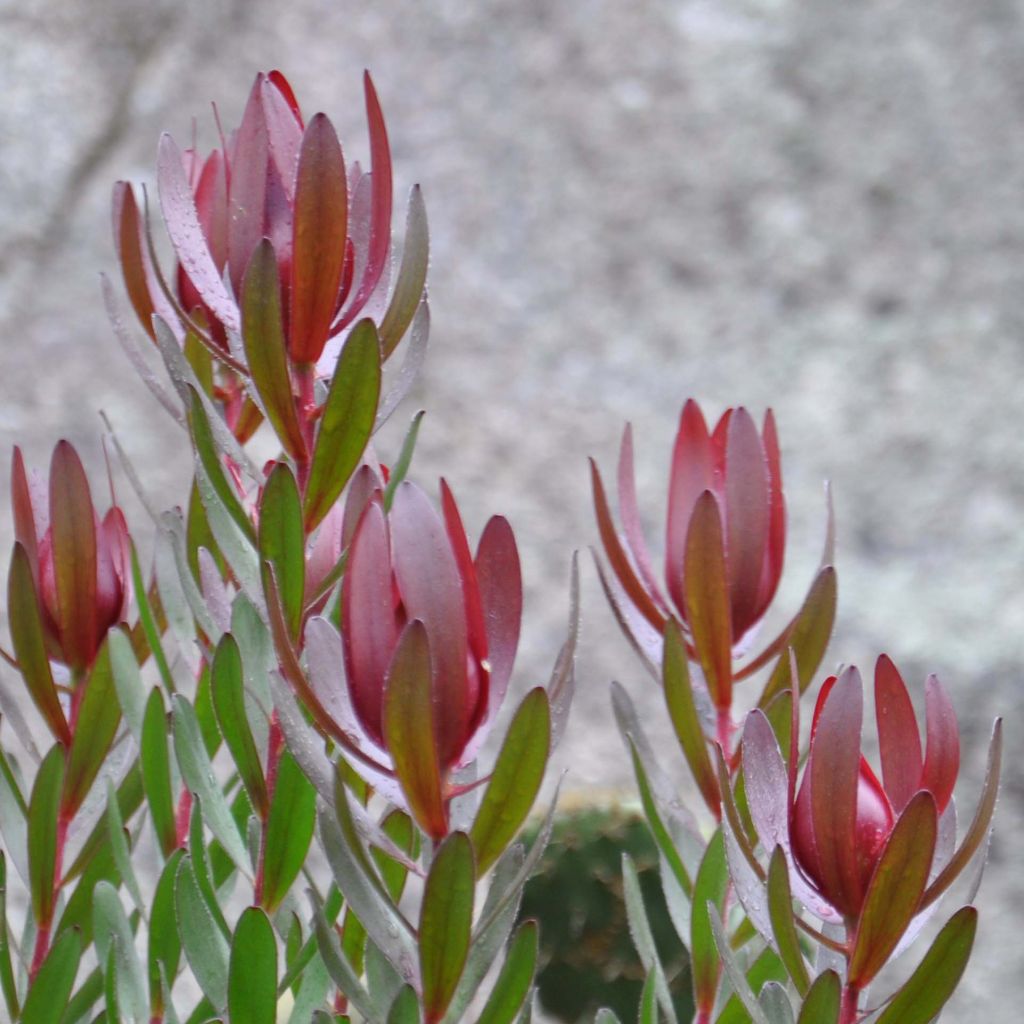

Leucadendron Safari Sunset - Conebush
Leucadendron Safari Sunset - Conebush
Leucadendron salignum x laureolum Safari Sunset
Conebush
This item cannot be shipped to the selected country
Delivery charge from €6.90
More information
Delivery charge from €6.90
More information
Schedule delivery date,
and select date in basket
This plant carries a 24 months recovery warranty
More information
We guarantee the quality of our plants for a full growing cycle, and will replace at our expense any plant that fails to recover under normal climatic and planting conditions.
From €7.90 for pickup delivery and €6.90 for home delivery
Express home delivery from €8.90.
Does this plant fit my garden?
Set up your Plantfit profile →
Description
The Leucadendron 'Safari Sunset' is a very exotic looking evergreen bush, appreciated for its vigour, its long flowering from spring to summer, and its remarkably colourful vegetation, changing with the seasons. Its leaves take on beautiful purplish hues at full flowering, echoing its lighter red floral bracts, carried by stems that have also turned red. The inflorescence gradually turns pale yellow towards the end of summer. It is not surprising that this very beautiful plant is cultivated on a large scale in New Zealand for the cut flower market! Increasingly used in contemporary or Mediterranean-inspired arrangements, particularly by the sea, Leucadendrons are grown in large pots outside the mildest areas of the mediterranean as it will be imperative to shelter them as soon as the first frosts arrive.
The Leucadendron 'Safari Sunset' is an old New Zealand horticultural hybrid, resulting from the cross-breeding between the Leucadendron salignum and the L.laureolum. All these plants belong to the proteaceae family and are native to the Cape province in South Africa. Like Proteas, Leucadendrons are strange plants in every respect, they need fire to germinate their seeds. However, unlike proteas, male and female plants are distinct. 'Safari Sunset' forms a dense, bushy bush, with a compact habit. This vigorous variety quickly reaches 1.50m (4 ft 11 in) in height and 1.20m (3 ft 11 in) in width. Multiple stems emerge from a stump capable of regenerating after a fire. They bear narrow, long, elliptical, evergreen leaves, covered with a waxy bloom, which are green but turn violet-red at flowering, just like the floral stems. Flowering generally occurs from April to September in Europe. The small yellow flowers, arranged in more or less conical inflorescences, are surrounded by very conspicuous long bracts, arranged in stars, whose colour changes over time from light red to yellow. Dressed in warm and changing tones, this beautiful bush deserves its name of "Sunset on a safari".
The Leucadendron Safari Sunset is a sensational plant for a very mild climate. It will prefer to be planted in coastal gardens spared by severe frosts, in light, poor, mineral, rather acidic soil. Particularly adapted to the Mediterranean climate with long summers, it can cope in slightly cooler soils of the Atlantic coast. It will look good on its own, on large slopes or in the background of exotic beds, but always in an open situation, in full sun. In an exotic garden, it can be associated with plants that appreciate the same growing conditions: the Canary Island Viper's Bugloss, the Royal Protea, the Euphorbia characias, the Nolina siberica, the Giant Fennel, the Yucca rigida, the Melianthus major, or medium-sized palm trees like the Blue Palm of Mexico (Brahea armata). In New Zealand, the flowers are very popular in floristry because they last a long time in bouquets while providing a fantastic colour.
Leucadendron Safari Sunset - Conebush in pictures




Plant habit
Flowering
Foliage
Botanical data
Leucadendron
salignum x laureolum
Safari Sunset
Proteaceae
Conebush
Cultivar or hybrid
Other Leucadendron
View all →Planting and care
Plant the Leucadendron 'Safari Sunset' in spring, or in autumn in very mild climates, in a very sunny and sheltered location. This plant requires light, well-drained, filtering soil, low in nitrogen, tending to be acidic, fresh to dry in summer. A mix of leaf compost, a little ericaceous soil and river sand seems appropriate. Leucadendrons, like proteas, are sensitive to excessive phosphates and nitrates, so it is necessary to avoid giving too much fertiliser, or not giving any at all. While adult plants tolerate occasional frosts of the order of -5°C (23 °F) in dry soil, young plants, on the other hand, will be sheltered from frost during their first years, in a frost-free location in cool climates or under a winter veil in regions with mild winters. This plant flowers after about 4 to 5 years of cultivation. For indoor cultivation, it is important to maintain good room ventilation and to avoid watering with hard water.
Planting period
Intended location
Care
Similar products
Haven't found what you were looking for?
Hardiness is the lowest winter temperature a plant can endure without suffering serious damage or even dying. However, hardiness is affected by location (a sheltered area, such as a patio), protection (winter cover) and soil type (hardiness is improved by well-drained soil).

Photo Sharing Terms & Conditions
In order to encourage gardeners to interact and share their experiences, Promesse de fleurs offers various media enabling content to be uploaded onto its Site - in particular via the ‘Photo sharing’ module.
The User agrees to refrain from:
- Posting any content that is illegal, prejudicial, insulting, racist, inciteful to hatred, revisionist, contrary to public decency, that infringes on privacy or on the privacy rights of third parties, in particular the publicity rights of persons and goods, intellectual property rights, or the right to privacy.
- Submitting content on behalf of a third party;
- Impersonate the identity of a third party and/or publish any personal information about a third party;
In general, the User undertakes to refrain from any unethical behaviour.
All Content (in particular text, comments, files, images, photos, videos, creative works, etc.), which may be subject to property or intellectual property rights, image or other private rights, shall remain the property of the User, subject to the limited rights granted by the terms of the licence granted by Promesse de fleurs as stated below. Users are at liberty to publish or not to publish such Content on the Site, notably via the ‘Photo Sharing’ facility, and accept that this Content shall be made public and freely accessible, notably on the Internet.
Users further acknowledge, undertake to have ,and guarantee that they hold all necessary rights and permissions to publish such material on the Site, in particular with regard to the legislation in force pertaining to any privacy, property, intellectual property, image, or contractual rights, or rights of any other nature. By publishing such Content on the Site, Users acknowledge accepting full liability as publishers of the Content within the meaning of the law, and grant Promesse de fleurs, free of charge, an inclusive, worldwide licence for the said Content for the entire duration of its publication, including all reproduction, representation, up/downloading, displaying, performing, transmission, and storage rights.
Users also grant permission for their name to be linked to the Content and accept that this link may not always be made available.
By engaging in posting material, Users consent to their Content becoming automatically accessible on the Internet, in particular on other sites and/or blogs and/or web pages of the Promesse de fleurs site, including in particular social pages and the Promesse de fleurs catalogue.
Users may secure the removal of entrusted content free of charge by issuing a simple request via our contact form.






































